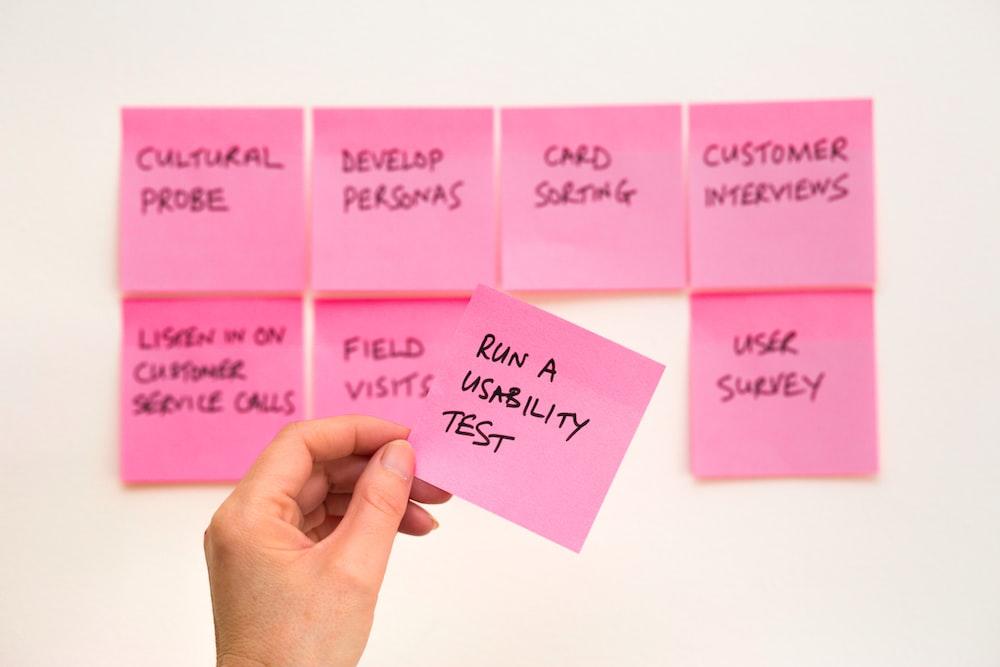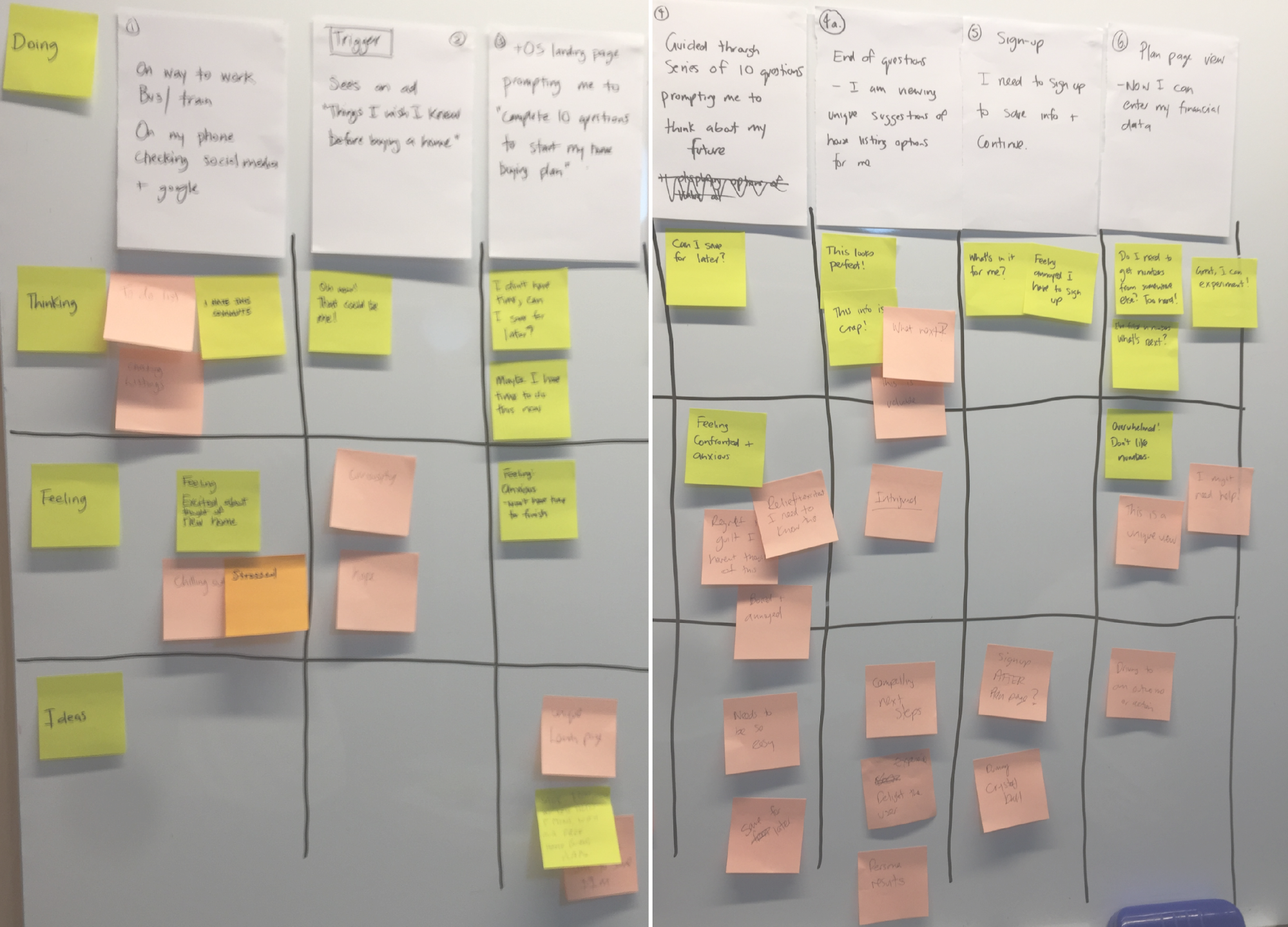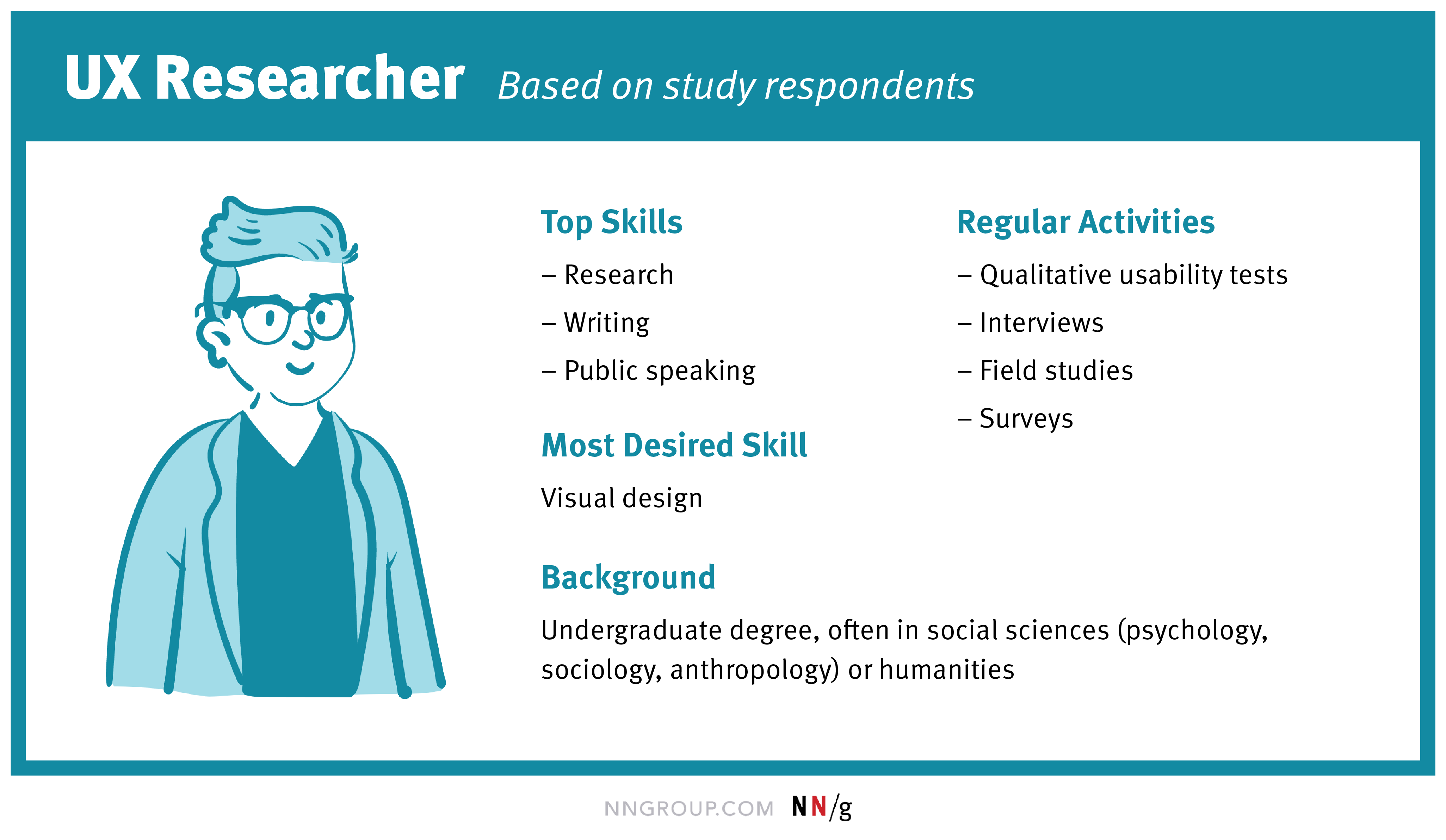UX research is a crucial component in creating usable and enjoyable experiences for your customers. Without engaging in research, you are often left with relying solely on stakeholder opinions and assumptions that can’t be validated and may have a negative impact on the final user experience for your product or service.
UX research is generally conducted at the beginning of designing a product or service and can also be used to enhance existing products or services. There are some research methods that are used during the design phase of a project, such as usability testing of a prototype of your product.
In this article, we will explore some of the many different types of UX research methods and tools, and how these can fit into your design processes.
It's important to note that it’s not always possible to apply all types of research to your project, and you will need to make choices in determining which methods will make sense based on user accessibility, budget and time constraints.
What is UX research and why is it important?
User Experience (UX) research is the practice of studying and understanding your customer needs, behaviours, and motivations.
This research is gathered through activities such as A/B experiments, surveys, focus groups, observation techniques, and task analysis, to provide insights and validation that can be applied during the UX design process, to create the best possible user experience.
UX Research is a critical element of a successful user experience design process, as it ensures that the product being designed meets the user needs. The outcomes of UX research will establish a good understanding of how users interact with a product, website, or system, and can provide insight into how the experience can be improved.

UX research methods
There is a myriad of UX research methods available to UX designers. Most methods can be broken down into either quantitative or qualitative data types. As a basic rule, you can use quantitative data to identify user patterns. This tells you “what” is happening and is generally measured numerically (e.g. 80% of our site visitors only visit the home page).
You can then use this data to inform your list of questions to ask individual users to understand the “why” (e.g. Why did you leave the home page after 2 seconds?). This kind of data is referred to as qualitative.
What is Quantitative Data?
Quantitative research is a type of research that uses numerical data to measure and analyse certain assumptions. This type of research is used to answer questions that require a numerical answer and is based on the idea that this data can be used to draw conclusions about the subject in question.
Examples of quantitative research include surveys, A/B experiments, and data analytics. Surveys are a great way to collect data from a large number of people and ask them specific questions about a given topic. Data analytics can provide insights and user behaviour patterns emerging from the use of a product or service online.

What is qualitative data?
Qualitative data is gathered from capturing user feedback through activities such as interviews, focus groups, and observations.
Qualitative research is used to explore and understand people’s beliefs, experiences, attitudes, and behaviours. For example, a qualitative research study might be conducted to understand why people prefer certain brands of clothing over others. Through interviews, focus groups, and/or observations, researchers would explore the participants’ feelings and opinions about the various brands, their reasons for preferring one brand over another, and any other insights that could help the company understand consumer preferences better.
Types of research methods
Surveys (Quantitative and Qualitative)
A survey is a type of research method that can be used to gather data from an identified target audience. Surveys are usually conducted by asking participants questions relating to a specific topic or area of interest. They can be conducted in person, over the phone, or online through a variety of survey platforms. The survey questions are designed to provide a snapshot of the user’s opinions, experiences, and beliefs. Questions that provide single or multiple-choice options are quantitative in nature, and questions that allow text entry into a free text field are capturing qualitative data.
Survey questions may ask participants to provide information on a range of topics, such as demographic data, attitudes and level of satisfaction toward the product or service, and ideas for improvement.
By analysing the data outcomes of surveys, UX researchers can gain valuable insights into the behaviours and attitudes of the audience they are studying.
Web Analytics (Quantitative)
Web analytics are used to capture user behaviour as they engage with an online product or service. This data is then used to identify patterns in user activity, such as what features they use most often, what pages they visit, what pages they don’t visit, and how long they stay on certain pages. Additionally, this data can be used to identify issues or challenges in the user journey throughout a website when attempting to achieve a goal, such as signing up to attend a course.
By understanding user behaviour, product or service teams can confirm or dispel assumptions of the product use and focus on enhancing certain journeys or features to meet the needs of their users.
A/B Testing (Quantitative)
A/B testing is an effective method to test online product performance. It is a process of comparing two versions of a website or mobile app, A and B, to see which one functions better. The outcome is to identify the version that is more effective in terms of user engagement and other success metrics.
For example, you can test different versions of a landing page to see which one leads to higher conversions. With A/B testing, you can quickly identify which version of your product works better and make the necessary changes. You can then test the next two versions, and keep refining until you have optimised the design to match the best outcome. This is one of the most effective ways to ensure that you are delivering the best possible experience to your users.

Competitive Analysis (Quantitative)
A competitive analysis is an assessment of the strengths and weaknesses of current and potential competitors. It allows businesses to identify opportunities and better understand the competitive landscape. This analysis is carried out by researching the industry and analysing the data to identify elements such as market share, products and services, features, flows, usability, and pricing.
The outcomes of this research can allow businesses to determine how to position their own products and services in their specific industry and provide a competitive advantage. From a UX perspective, competitive analysis is a useful technique in providing design ideas and approaches to inspire your design approach.
Ethnographic studies (Qualitative)
Ethnographic studies are used to gain insight into the cultural beliefs, behaviours, and activities of a particular group of people. This is done through participant observation, interviews, and surveys. Researchers focus on understanding the culture, values, and norms of a specific group so that they can better understand ways in which people interact with each other.
This type of research allows the researcher to gain a better understanding of the motivations and beliefs of individuals within a certain culture, which can be used to inform decisions and strategies. Ethnographic studies can be used in UX research for projects that are targeting differing cultures as the main audience.
Card Sorting Studies (Quantitative)
A card sorting study in UX design is a method used to understand how users organise and categorise information. It is an effective way to gain insight into how users might think about the content and structure of a website or application. Card sorting can be used for new projects, or to refine existing websites or applications.
During a card sorting study, participants are asked to group the content into categories that make sense to them. This information is then used to inform the navigation design and assists designers to create a structure that is intuitive and easy for users to navigate.

Desktop research (Qualitative)
UX designers often use desktop research as a method to quickly gather data and insights at the beginning of a project. It usually involves reviewing existing resources such as websites, books, articles, and reports. This type of research is beneficial because it is inexpensive, easy to access, and allows you to gain knowledge quickly.
Desktop research can provide you with the following types of insights:
Better understanding of the user’s needs, behaviours, and preferences.
How the product or service might fit into the market.
Comparison of similar products and services,
Identifying trends.
Making informed decisions to apply to your design approach
Stakeholder interviews (Qualitative)
UX designers perform stakeholder interviews to gain a better understanding of the users of their product or service, as well as the goals and needs of the business. These interviews are generally carried out before you conduct any user interviews as it gives designers a solid understanding of business expectations.
The interviews are an important part of establishing both business and user requirements, as they allow you to identify any gaps in the existing design process and address potential issues before they arise. You also have the opportunity to discuss possible design solutions with stakeholders and ensure that the business design expectations are considered.
User interviews (Qualitative)
User interviews are one of the key research methods in understanding your users and are generally carried out at the beginning of a project. If the project is new, you will be interviewing potential customers. If the product or service already exists, you may be interviewing existing customers and talking about how they use your product.
The outcomes will provide you with a better understanding of the needs, wants, and motivations of your users. Through these conversations, designers can uncover insights and learn more about how users may interact with your product.
User interviews can also provide opportunities to identify any pain points or areas of improvement in an existing user experience. By gaining a deeper understanding of user behaviour, UX designers can create more engaging, user-focused experiences.

User Journey Mapping (Qualitative)
User journey mapping is one of my favourite research activities, as it allows you to identify and focus on specific challenges faced by the user while using a product or service. In a collaborative team environment, this is a real opportunity to brainstorm solutions that may otherwise have remained unidentified.
The user journey mapping process involves documenting a customer’s path as they move through different stages in their engagement with a product or service. This includes recording the customer’s pain points and decision-making process. With this information, teams can devise design strategies to optimize the customer experience, such as creating a smoother checkout process or improving customer service.

Usability testing (Qualitative)
Usability testing is a method of assessing the user-friendliness of a product, usually a website or software application. It is used to evaluate how easily users can interact with a product or system, and to identify areas of improvement. Usability testing typically involves recruiting user participants to achieve a task or goal using a prototype or demo environment that contains your product interface. As they perform the task, you ask them to speak out loud and you ask relevant questions to prompt them, without giving them instruction. Usability testing can be performed in person or remotely over video.
The ultimate goal of usability testing is to ensure that the product is intuitive and easy to use, using a UX design tool to map out the layout first is every first step in this process. By understanding the user's needs and challenges, usability testing outcomes can then be applied to your product design to solve these challenges and create a better user experience.
Usability testing is definitely one of the most insightful activities a designer can undertake, and although it takes planning and time, the outcomes are worth the effort.
Choosing the right research methods
Choosing the right research method will vary on each project and will depend on budget, time frames, resource availability and tools at your disposal. If you have time constraints and no access to users, you may want to focus on desktop research, competitive analysis, and stakeholder interviews.
If you are lucky enough to have a budget and resourcing for user interviews and user testing, these activities will greatly contribute to designing an optimal user experience. If data analytics are available to you this will help to establish a baseline. A/B testing is a highly effective process in the UX design toolbox, but you will need to have access to the right tools.
There is no simple answer here, and it will be up to you to determine which tools are right for your specific project.
How to conduct UX research
To start the UX research process, you will need to plan. Remember that collaboration is crucial to achieve the best outcomes for your research activities and for the business. Here are the steps you can follow:
Engage with various business stakeholders to understand their needs and expectations of the outcomes of your research efforts. You could do this by interviewing stakeholders, or reviewing a project plan that includes the UX research component deliverables.
Determine which research methods you need to engage in. As mentioned earlier, this will depend on budget, time constraints and access to resources, such as participants for surveys. You will probably need to document this as a plan with a timeline and then validate your approach with stakeholders.
Start to plan your individual activities in more detail. For example, if you are conducting a competitive analysis, define how many competitors you will review, and what specific information will be compared. If you are interviewing users, prepare your list of questions and document how you will recruit the participants.
Conduct the research. Whichever methods you have chosen.
Analyse and document the outcomes. Then present back to your stakeholders to demonstrate the insights, challenges and validations you have identified, as well as your own recommendations. It is crucial to gain a wider audience to ensure that your research efforts are utilised by the design team in creating a good user experience.

How to start a career in UX research
The first step is to research the industry and understand the different roles within UX research. You should also familiarize yourself with the latest trends and tools commonly used by UX researchers and designers.
I strongly recommend creating a portfolio of your work to showcase your skills and experience. Even if you are starting from scratch, you could create some of your own UX research projects to include. You may want to find some online courses to help you gain experience, and allow you to demonstrate a solid understanding of user experience principles such as usability, accessibility, and user interface design.
Once you can demonstrate your experience in the field, start networking with professionals in the industry, attend events, and apply for UX research positions. It won’t be easy landing your first job, but spending the time to learn and prepare will be the most effective pathway.
UX researcher job description
A UX researcher is responsible for understanding the needs and behaviours of users and customers. They conduct various types of research to gain insights into the users and their user experience. This can include interviews, analysing data, and conducting usability tests. The gathered information can then be used to develop and improve products or services to better meet the needs of customers. UX researchers also provide feedback to designers, product managers, and other stakeholders to ensure that the final product or service meets customer expectations.
Below is a list of some of the many tools you can use for your research activities.
Google Analytics
Matoma Analytics
Hotjar
Crazy Egg
Lucky Orange
Google forms
Maze
Survey Monkey
Microsoft forms
Usertesting.com
Maze
UserZoom
Loop11
Crazy Egg
Lookback
Optimal Workshop
Optimizely
Google Optimize
Adobe Target
SiteSpect
VWO
Qubit
FAQ
What is a UX researcher's salary?
According to Coursera, UX researchers can make around $88,000 - $134,000 per year in the US.
How do I get into UX research with no experience?
Without completing a course on UX research or similar or having a portfolio of your work, it would be very difficult to land a job with no experience.
Does UX research require coding?
UX research doesn’t require any coding.
What is the difference between UX researcher and UX designer?
A UX researcher is mainly focused on gathering relevant research information about users and their experience. A UX designer may also engage in UX research, but they also design user interfaces and user journeys for a product or service.
Is UX research qualitative or quantitative?
UX research involves both qualitative and quantitative research, as described earlier.
Conclusion
The field of UX research is broad, but the outcomes all focus on one thing - creating a better user experience for our customers. Whether you are just starting out in this field, or you already work in the field of UX design, there is always more to learn, and your research methods will keep evolving with every research project you complete. The tools for research are also evolving, making it easier for you to capture and analyse your research data. It’s definitely a fascinating area to be engaged in, and seeing the benefits of our insights makes it a rewarding and fulfilling career choice.













